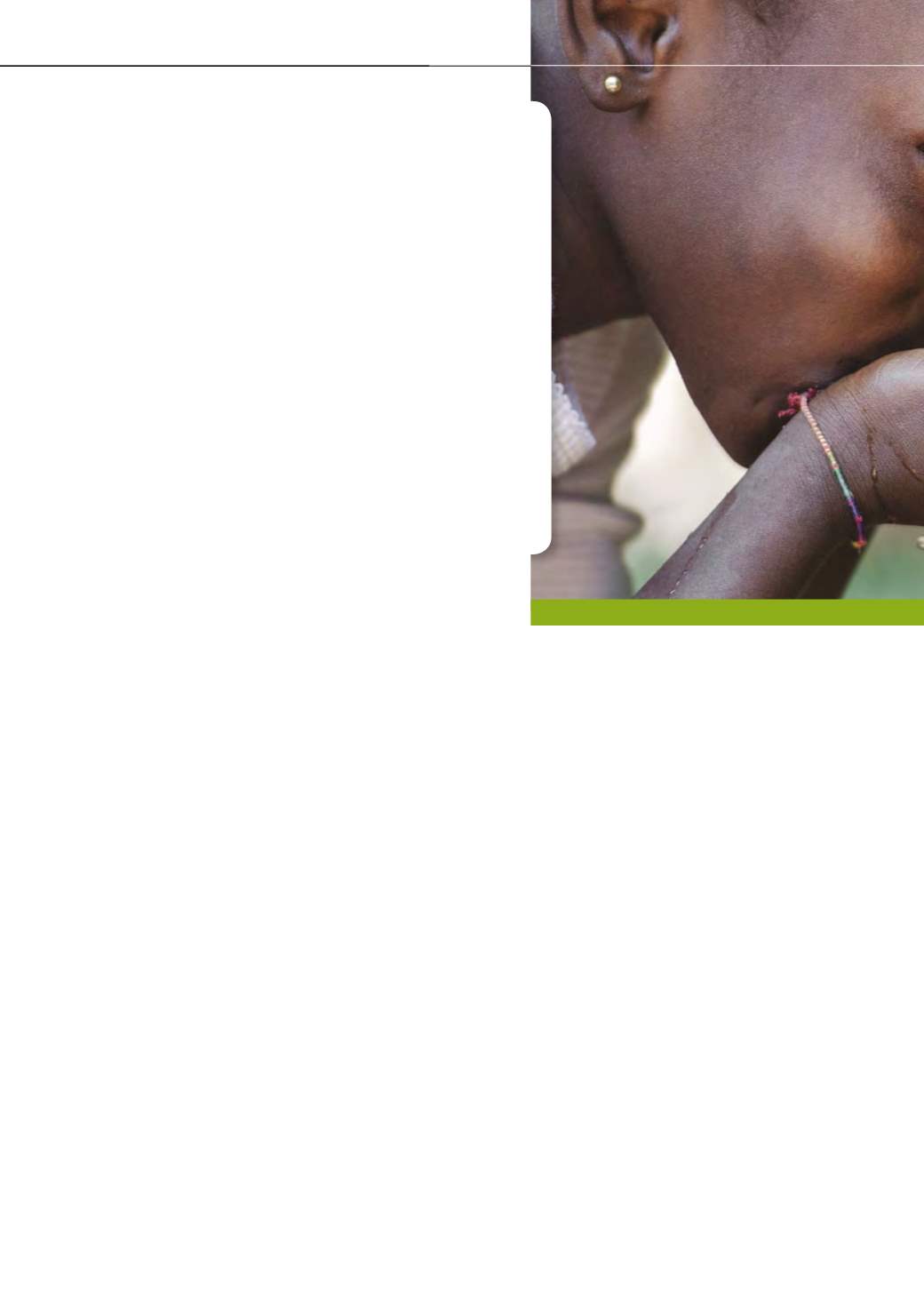

Chemical Technology • December 2015
16
Contaminants of emerging concern in drinking
water in South Africa
An LC-MS/MS-based survey
A
dvances in analytic technologies allow the identifi-
cation of chemical compounds at exceedingly low
concentrations (10-9 g/L) in drinking water. [1]
This permits the identification of compounds which, until
recently, were undetectable in water. These compounds
fall into broad categories, including pesticides, phar-
maceuticals and personal care products. Because we
are only now becoming aware of the presence of these
chemicals in drinking water, most of these compounds are
not included in routine monitoring programmes. Although
these compounds are generally present at concentrations
several orders of magnitude below established acute
toxicity levels, the effect of long-term exposure to very low
concentrations of these compounds on human health and
development is not known. This is particularly relevant to
pharmaceutical contaminants, which are designed to be
physiologically active at very low concentrations. Further-
more, some of these compounds interfere with the human
endocrine system (endocrine disruptors), which may result
in severe developmental defects with exposure of foetuses
or infants during critical developmental windows. There is
therefore a pressing need to investigate the potential health
impacts of these compounds in drinking water, collectively
known as contaminants of emerging concern (CECs).[2,3]
The US Geological Survey undertook several national re-
connaissance studies, including a 1999/2000 programme,
in which samples were analysed from 139 streams across
30 states in the USA.[4] A wide range of chemicals pres-
ent in residential, industrial, and agricultural wastewaters
was found to occur at low concentrations in streams in the
United States. The chemicals detected included human and
veterinary drugs, natural and synthetic hormones, detergent
metabolites, plasticisers, insecticides and fire retardants.
One or more of these chemicals was found in 80 % of the
streams sampled. In a national groundwater study by the US
Geological Survey, samples from 47 wells in 18 states were
analysed for 65 chemicals.[5] A profile of chemical pollutants
similar to that observed in streams was found, although the
contaminants were generally present at much lower levels.
In another US Geological Survey study of untreated drinking
water from25 groundwater and 49 surface water sites in 25
states, pharmaceuticals, plasticisers and fire retardants were
detected.[6] Taken together, these studies provided valuable
baseline information on the presence of CECs and other
compounds in the US water system, and provides a valuable
frame for further toxicity and public health impact studies.
The list of CECs is extensive, and includes sucralose, an-
timony, siloxanes, musks, nanomaterials, perfluorooctanoic
acid, perfluorooctane sulphonate and other perfluorinated
compounds, pharmaceuticals, hormones and hormone- ac-
tive compounds, collectively known as endocrine disrupting
compounds, drinking water disinfection by-products, sun-
screens/UV filters, brominated flame retardants, benzotri-
azoles, naphthenic acids, cyanobacterial toxins, perchlorate,
dioxane, pesticides and pesticide degradation products, and
microorganisms, including viruses.[7]
Generally, organisations involved in water health and
safety monitor CECs based on available technologies, known
occurrence and health impacts.[8,9] A technique that is cur-
rently widely used tomonitor CECs is high performance liquid
chromatography coupled with tandem mass spectrometry
(LC-MS/MS). [7]
Advances in many analytical techniques
allow the detection of compounds in
water at very low concentrations which
has facilitated the identification of many
compounds in drinking water that went
previously undetected. The range of CECs
detected in drinking water, and seasonal
and geographic variability in CECs levels,
warrant a more frequent screening
programme.
by Christiaan Odendaal and Maitland T Seaman of the Centre for Environmental Manage-
ment, University of the Free State, Bloemfontein, South Africa, and Gabre Kemp, Huibreght
E Patterton, and Hugh-George Patterton of the Department of Microbial, Biochemical and
Food Biotechnology, University of the Free State, Bloemfontein, South Africa
















